Get a Body Like a Dancer
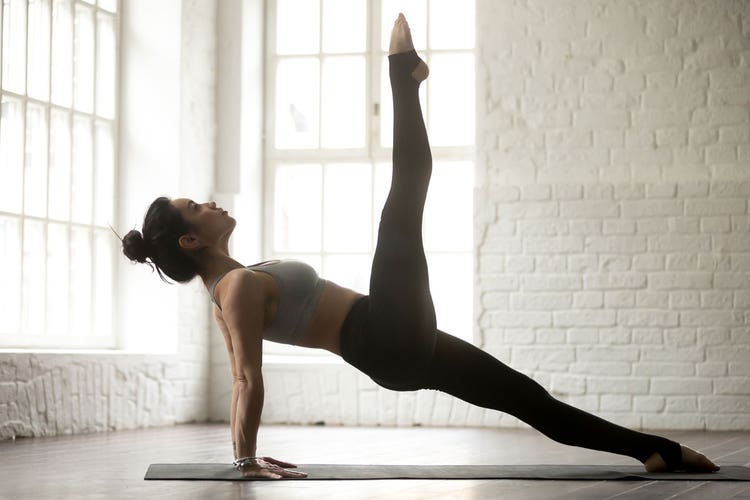
These 16 inspired moves transform and tone.
There are hundreds of reasons to dance, and cultivating a dancer’s body is one of them. These are our favorite go-to exercises to give you the nimble strength and posture of a dancer, not to mention more confidence.
While not all of us feel comfortable commanding the global stage and shaking it like Beyoncé, we can all manifest svelte legs that can dance the night away with a lean core and regal posture that captures everyone’s attention. And luckily, we don’t need a degree from Julliard to earn a dance card. These classic moves inspired and approved by dancers allow anyone to attain a dancer’s lean body and endurance. The key to success is the discipline to show up and practice the fundamental moves.
TRAINING THE UPPER BODY
Dancing is a total-body endeavor, and a strong upper body is critical to help control movements on stage and prevent injury when choreography calls for lifts, catches or rolls.
Triceps Press-Up
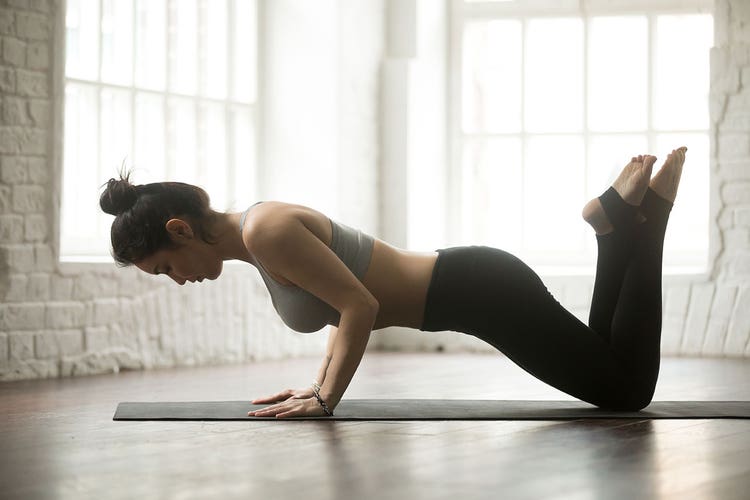
How to Do It:
Close-grip push-ups or triceps push-ups are one of the most effective movements using your own body weight. Start on your hands and knees with your legs together and your shins pulled off the floor or toes tucked under for support. Arrange your arms underneath your shoulders with your neck neutral and extended in a straight line from your hips. Keep your core muscles engaged as you lower your body toward the floor, keeping your elbows close to your torso until it is a few inches off the floor. Keep your shoulders back, and pinch your shoulder blades together. Push the ground away to straighten your arms. Repeat 15–20 times.
Shoulder Stretch
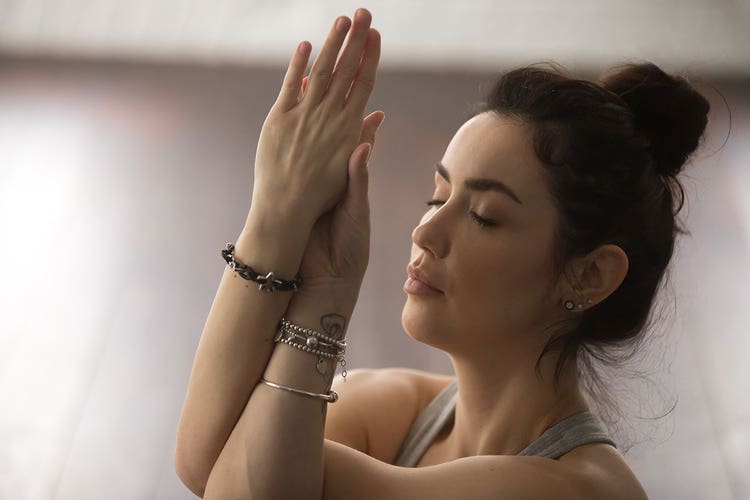
How to Do It:
No matter the dance, expressive arms require regular loving care. This shoulder stretch feels great and keeps the shoulders and neck relaxed and ready to move. Sit or stand tall, and reach both arms out to the side. Bring your arms together at the elbows, and twist your forearms until your hands gently clasp. Drop the shoulders away from the ears, and relax your neck in a neutral position. Breathe comfortably and hold for 60 seconds or more before switching sides.
TRAINING THE LOWER BODY
To kick, pivot or arabesque, your hips need to be liberated and ready to move in any direction your feet point. This requires healthy, happy and flexible hips in all ranges of motion and directions of movement. As this is a complex joint, it is easy to forget some of the angles, but it’s super important that you listen to your hips, understand their fluidity, and address any growing restrictions or pain points. Definitely address your adductors and abductors—or inner things and outer hips—as they must work together as a team to keep your pelvis moving well.
Standing Balance
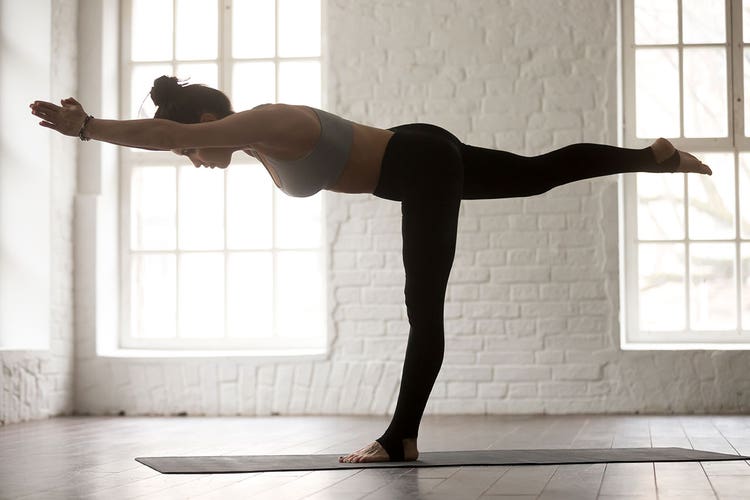
How to Do It:
Balance is an expression of articulation, focus, grace and power all in one move. Begin standing tall with your feet hip-distance apart and your arms at your sides. Keep your body long and press your weight into your right foot while you lift your left leg behind you as you tip forward, lowering the torso and bringing your body parallel to the ground. Extend your arms forward so they are level with the neck and spine. Maintain the position by reaching through the back of your heel as if you’re pressing a wall behind you. Keep the muscles of both legs actively engaged, and move to straighten the standing leg and lift the back leg as high as possible. Avoid locking the knees, and keep your spine and neck long and your hips parallel with your shoulders. Breathe evenly, bringing awareness to the present moment. Hold the pose for 60 seconds or more. Release gently and repeat on the other side.
Hamstring Stretch
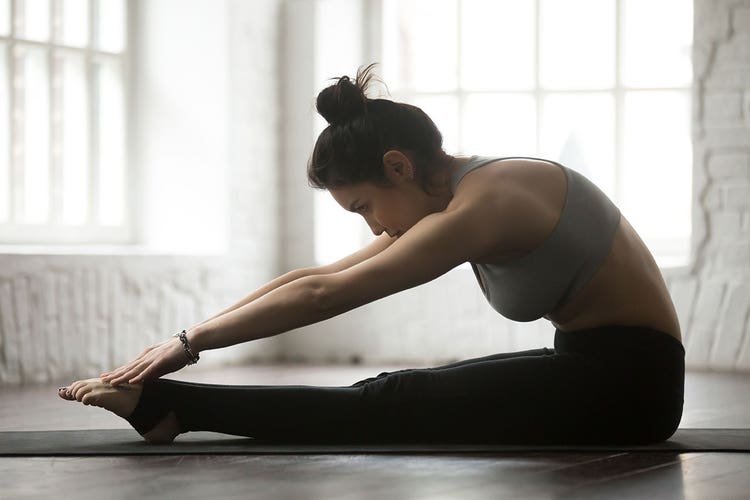
How to Do It:
It’s hard to dance when restricted by tight legs that create strain on the back and hips. Daily hamstring stretching is basic hygiene for a dancer. Stretches throughout the day and during practice increase range of motion and serve as a set point for checking in on the body’s readiness to perform. The seated hamstring stretch is a classic move that feels great, downregulates the nervous system and is an excellent movement to visually represent progress for the body.
Sit on the floor with your legs extended in front of you. Bend your knees if necessary for comfort, eventually straightening the legs as flexibility increases. Reach actively through your heels and lift your arms overhead, lengthening your spine. As you exhale, bend forward from the hip joints to reach toward the toes, tipping your torso and head toward the knees. Keep your core engaged, and extend your spine to avoid rounding the back. Hold for 60 seconds, breathing consciously and relaxing the back of the legs. To release the stretch, tuck your tailbone down to the floor, inhale and lift your torso.
Bridge
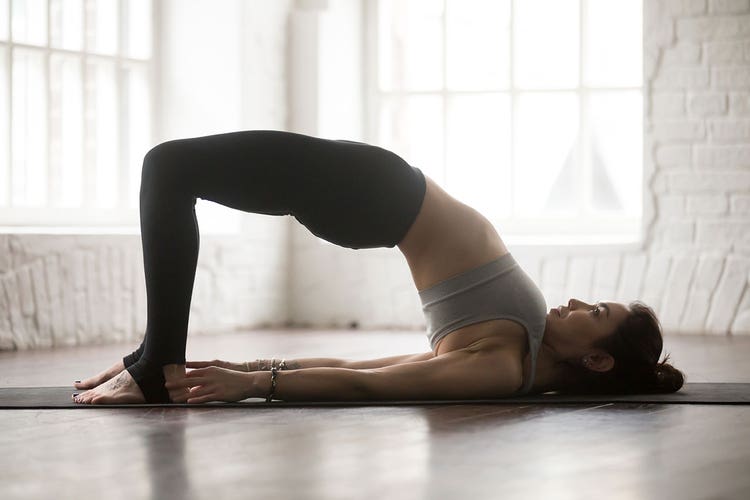
How to Do It:
Healthy glutes are the key to all lifts, jumps and deep squats—essential movements in most forms of dance. The bridge is a great all-in-one glute strengthener, hip opener and backbend and is excellent to include as a daily move. Begin on your back with your knees bent and feet planted hip-width apart, and your arms aligned next to your torso. Keep your neck long and relaxed and your core engaged as you press strongly into your feet and lift your pelvis up toward the ceiling as far as possible without straining. Maintain parallel thighs and breathe naturally. Hold for 60 seconds or more, and then release back to the ground.
Inner Thigh Stretch
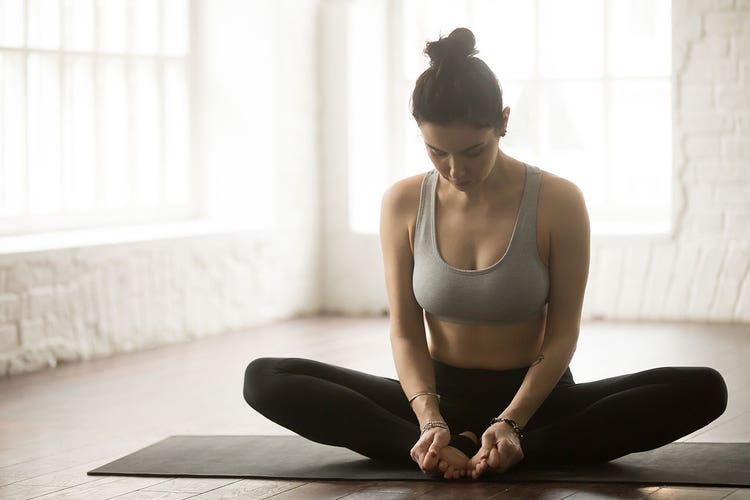
How to Do It:
Maybe natural flexibility is not part of your DNA, but trust that by putting in the work, it will be possible to progress toward an inspiring range of motion. Start by sitting upright with excellent posture. As you engage the core, bring the soles of the feet together and pull the heels in toward the pelvis, allowing the knees to open toward the floor. Hold your feet with your hands, and lift your chest toward the sky as you inhale. Then fold toward your feet as you exhale. Breathe into the stretch and hold for 60 seconds or more with impeccable posture and composure.
Seated Glute Stretch
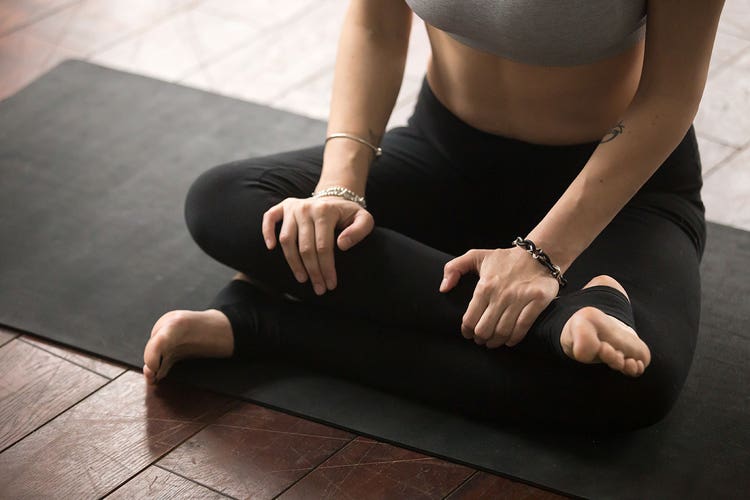
How to Do It:
Tight glutes are problematic for most movement. Strong glutes that are supple and have full range of motion are critical to maximize performance and reduce the risk of injury. Start seated in a cross-legged position with excellent posture. Work on leveling the pelvis and stacking the ribs over the center of the hips with the neck over the spine. Move the bottom shin forward slightly, and then stack the top shin on top of the bottom leg. Line up the ankles over the knees, and flex the feet. Keeping the pelvis neutral and the spine lifting out of the hips, lean toward the shins as far as is comfortable. Breathe into stretch and hold for 60 seconds or more, and then shake out the legs and switch legs.
Full-Body Hip Stretch

How to Do It:
As you advance, you can graduate to this complex stretch that addresses freedom of the entire hip joint. This outer hip stretch combined with a hip flexor opening is a powerful tool to reset any stored tension. It allows you to stretch the entire front body and create space in the hip flexors at the same time. When combined with an upward posture, you also create strength and tone in your back muscles and improve overall posture.
Start on your hands and knees, and slide the right knee to the right elbow with your right ankle in front of your left hip. Stretch the left leg back behind you, and anchor your hips to floor. Square your hips and torso as much as possible, and create length in the front of the body by tucking your tail. Reach around to hold your back foot with your elbow or hand, maintaining the original hip position and continuing to lengthen the spine out of the hips. Do not strain to create a range of motion. Once you are in the posture, hold it for at least 60 seconds, and then gently release and repeat the movement on the other side.
TRAINING THE CORE
A dancer’s body is dependent on a strong, supple core that can support the body as it moves and grooves through space. This takes more than a few good crunches; it requires full awareness of how to consciously engage the core musculature in a variety of positions both in training and in practice and performance.
Stabilized Curl
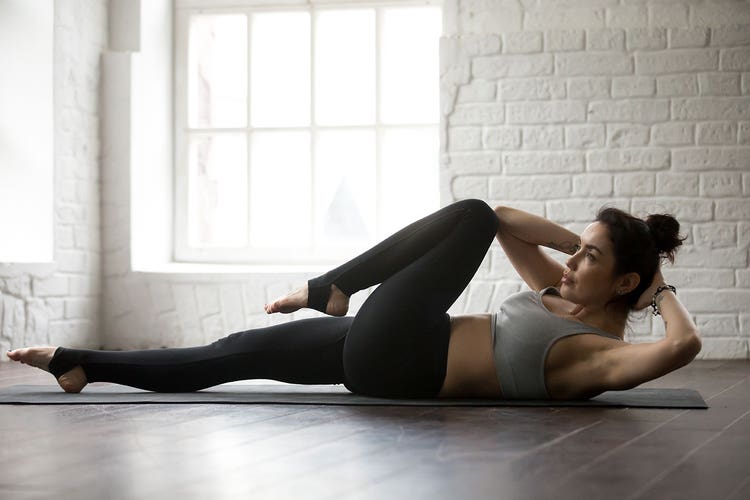
How to Do It:
This move takes the traditional crunch to the next level. It allows for stability and mobility (and great looking abs). Start on your back, and bring your hands behind your head without pulling on the neck or head. Lift your legs, and place your thighs over your hips with your knees bent to 90 degrees and your shins held parallel to the ground. Keep your legs stable and exhale as you roll your upper back and shoulders off the floor as far as possible. Hold this position for a complete exhale, and roll back down to the ground. Continue for 15–20 repetitions, exhaling with each controlled lift.
Oblique Cross Crunch
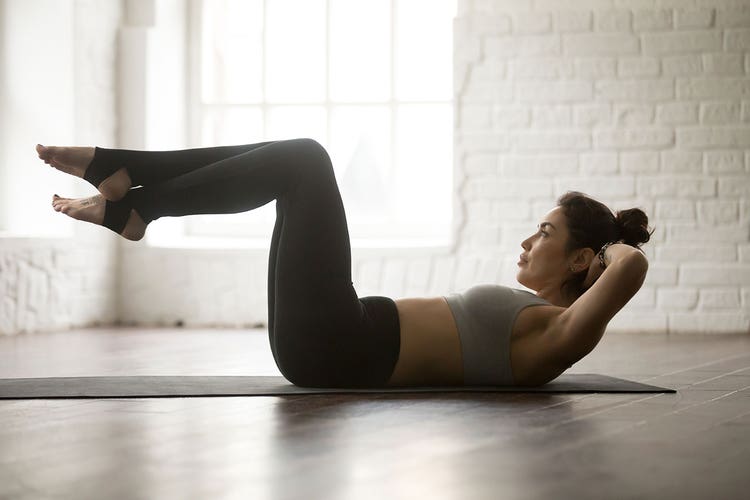
How to Do It:
Rotation is essential to movement, posture and aesthetics. To build this movement pattern, start on your back, and bring your hands behind your head without pulling on the neck or head. Lift your legs, and bring your knees to your chest. Lift one shoulder, rotate your torso to meet the knee and extend the leg out straight from the hip. Keep your hips stable, and contract the core to create the movement. Alternate side to side, holding each repetition for a full exhale. Repeat 15–20 times, exhaling with each controlled lift.
Plank
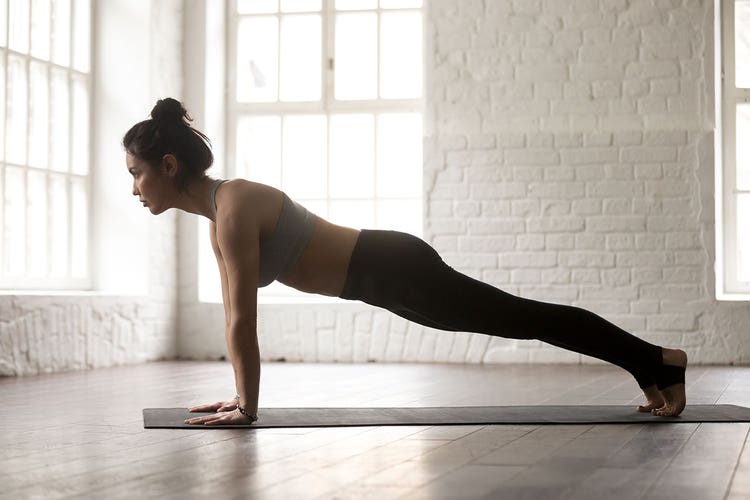
How to Do It:
As a dancer, stability is paramount. And core stability means having the ability to maintain a neutral spine as a foundation in any position. Plank pose will get you there. Start by stacking your arms underneath your shoulders with your hands spread wide. Lengthen your body out behind you with your legs straight and your neck following the line of your spine. Engage your core to square your hips and shoulders. Maintain the position with your body contracted lightly from head to toe and breathe freely. Hold for up to 60 seconds with impeccable posture and composure.
TRAINING THE BACK
A dancer needs a spine that moves with and supports the body in motion—whether in the air or on the ground. Keeping it free of restrictions from all angles is incredibly important, and moves that extend and twist the spine can keep it flexible and mobile.
Back Extension
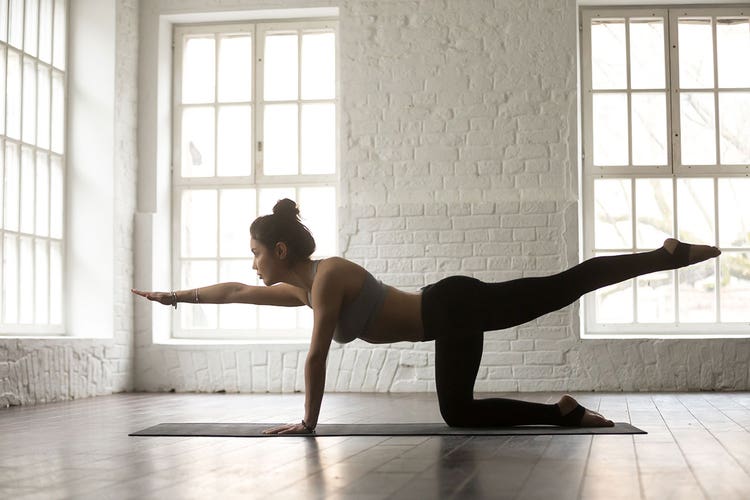
How to Do It:
Back extension gives us the power to stay upright with impeccable posture and the mobility to express dance in a variety of ways. Start on your hands and knees with your arms under the shoulders and your knees under the hips. Keep your shoulders parallel with your hips and your core engaged as you extend one arm and the opposite leg out until parallel with the ground. Maintain a neutral neck, and work on extending out as far as possible without impacting the positioning of the core. Hold for 60 seconds or more and release gently. Repeat on the other side.
Seated Twist
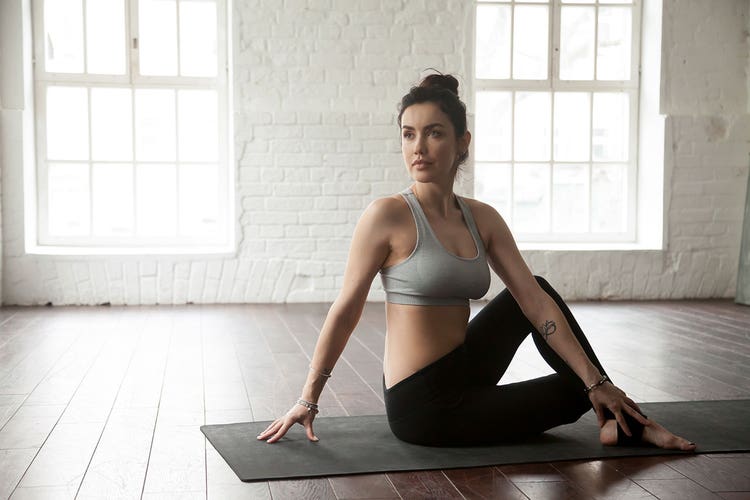
How to Do It:
When controlled and deliberate, twisting moves are incredibly helpful and also serve to create muscle balance and release stored up tension. Start seated in a comfortable position. Cross the legs or sit in any way with the torso lifting out of the hips. Moving the upper body as one unit, rotate to reach across to the opposite leg or hip, turning the head to look over the shoulder and engaging the core with the exhale. Hold for 60 seconds or more and release gently. Switch the legs and repeat on the other side.
Full Backbend
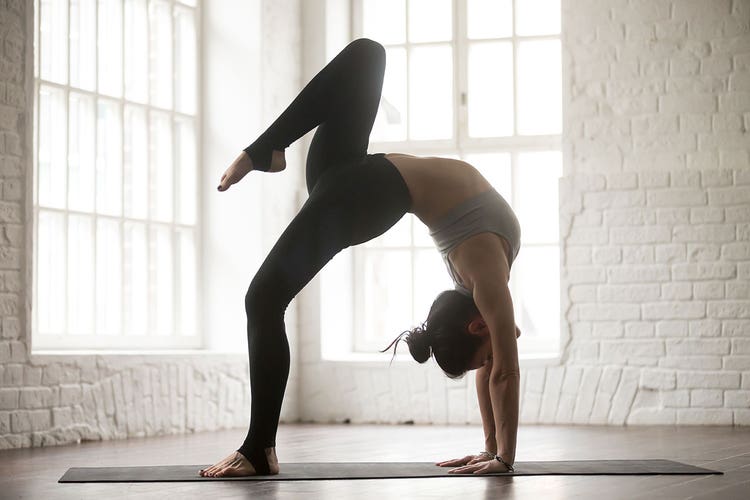
How to Do It:
One of the most glorious angles of a dancer’s body is the flowing curvature of a spine well extended. Backbends are breathtaking but not always easy to master. They require a mobile and limber spine and freedom in the joints around the shoulders and hips so as to not overly compress the spine while in motion.
For a full backbend—often referred to as a wheel in the yoga world—start on your back, bend your knees and place your feet on the floor with your heels as close to the hips as possible. Bend your elbows with your palms spread wide on the floor beside your head. Aim to arrange your forearms perpendicular to the floor, according to your flexibility, and point your fingers toward your shoulders. Press down into floor with your feet, and lift the hips up toward the ceiling, maintaining a neutral pelvis by gently tucking the tailbone toward the belly button. Keep your legs parallel, and as you breathe, push down into your hands and squeeze the shoulder blades into the back to lift up onto the crown of your head. Maintain parallel arms and freedom of breath as you straighten your arms, lifting your head and shoulders off the ground and lengthening the torso into a backbend. Root through the hands and feet and keep the core engaged as you breathe in the pose. Practice lifting the legs during the pose into different arrangements, perhaps easing toward the splits.
TRAINING THE MIND
The skill of a dancer and the grace and grit of the dancer’s body stem from more than deep practice and years of training discipline. These also come from developing a certain mind-set. Dancers are trained to use the mind’s eye and visualize the forms and experience of the music to tap into emotion and embody the movement in form. Visualization is available for all of us to experience and use to manifest our own dream physical experience.
Child’s Pose Rest
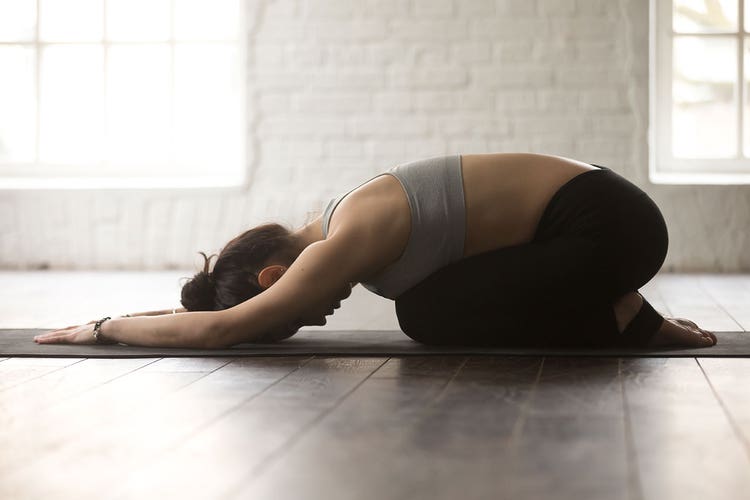
How to Do It:
Mental relaxation begins with physical relaxation. Child’s pose is a staple in any fitness routine. It releases the back, begins to calm the mind and links the breath to an embodied experience. Start on your hands and knees with your feet together and your knees either together or apart for comfort. Press into the hands, and round your spine with your core engaged. Walk your hands out in front of you until your head comfortably touches the floor. If preferred, fold your hands to support your head. Hold for 60 seconds or more, and then gently walk your hands back and slowly lift your torso and head.
Relaxation Visualization
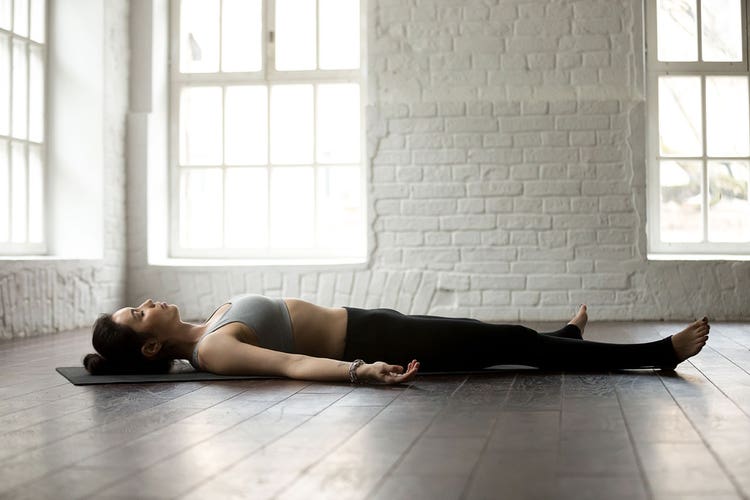
How to Do It:
Create a quiet, safe space, and then lie down on your back using pillows, blankets and props for comfort. If possible, cover your eyes and shut out all stimulation. Bring attention to your breathing, and practice slowing the pace of the breath while simultaneously increasing the volume of the breath. Do not force a change, simply explore. Notice how the body feels on the mat: the heaviness of the limbs, the support of the ground and the temperature of the room. Create an image in the mind of your future body dancing or moving in some specific way in a vibrant setting. See the expression on your face, and imagine the emotion and sensation of the experience. Cycle your attention between the breath, the sensations in the body and the images in your mind. Continue for 5 minutes, and then relax for 1 minute before returning to a seated position.
DANCE FOR IT
We were all born with a unique body structure that is ours and ours alone. Embrace that and don’t compare yourself with others. Others may be naturally more flexible or have more strength and stamina, but you can do things to improve your own fitness and flexibility starting today. You can perform many stretches and dance-inspired movements now! Some will be more comfortable than others, and some will work better for you than others. The point is to get moving and grooving in your own way.
Photo credit: fizkes, Adobe Stock